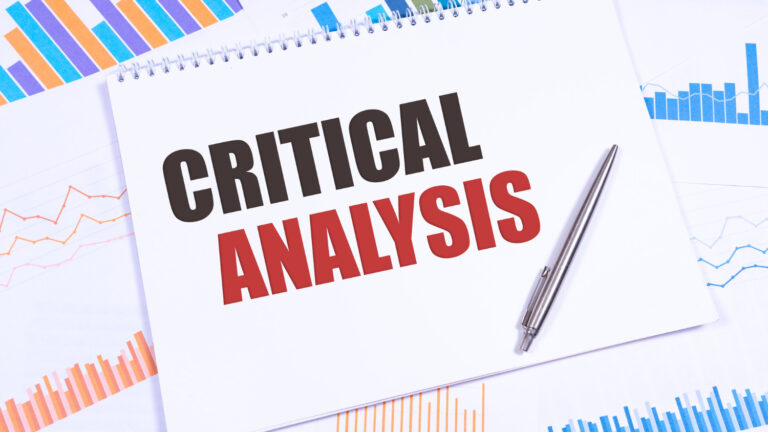Critical analysis papers (CAP) can be difficult to write and even more difficult to grade, but they are an important part of the English curriculum.
The papers provide students with the opportunity to think critically about their reading and writing. They are also used by teachers to see how well students are grasping the concepts presented in class. To aid you in writing your CAP, here are ten topics that might make good critical analysis essay ideas.
1.) Thesis Statement
This is probably one of the most important parts of a paper, yet it is often overlooked or not given enough attention during the planning stages of paper writing. A thesis statement explains what your argument or position will be on a particular topic or work for discussion during the course of your paper. It should be clear and concise rather than long and rambling; its sole purpose should be to give an idea as to where the discussion will go and what will be discussed during the essay.
2.) Setting and Atmosphere
Setting describes where a story or poem takes place while atmosphere is the general feeling that surrounds a particular work. Although these two things may seem to have little relevance in terms of critical analysis, they can provide important insight into a piece of literature. Often times, setting is used by authors to provide social commentary on culture at large (Charles Dicken’s “A Christmas Carol” provides an excellent example of this). Atmosphere is also utilized by writers to set the tone for their readers; it acts as another character within the story itself.
3.) The Main Character(s)
While many stories focus on more than one main character (think about how many characters there are in a book like “The Lord of the Rings”), it is important to keep in mind that all characters within a story are important. Following this idea, one great critical analysis topic would be how the actions (or inaction) of a particular character influences the outcome of a story. A good example can be found in Hamlet; ultimately, Hamlet’s failure at killing his uncle and subsequent death led to the deaths of almost everyone else in Denmark, including himself.
4.) The Physical Setting
This topic covers both the setting and atmosphere (see above). When discussing physical aspects such as location or surroundings, it is important to remember their influence on certain elements within a piece of literature. For instance, when writing Edgar Allen Poe’s “The Fall of the House of Usher,” it is important to keep in mind that Roderick Usher’s mental state was directly influenced by his surroundings (namely, his sister’s death and the crumbling house itself).
5.) The Moral or Philosophical Theme
The theme of work refers to the central idea or message being conveyed. Although this may seem simple on its own, it can prove difficult when trying to tie this idea back into the main argument of your paper. However, with some thought, you can discover how certain themes are used within various works. For example, in Shakespeare’s “Romeo and Juliet,” love is often portrayed as being both beautiful but also dangerous or tragic. This allows the to reflect upon their own lives and how they make decisions based on their own romantic experiences.
6.) The Writer’s Style
Another good topic for a critical analysis paper is to discuss the writer’s style. This should not be confused with specific styles of writing, such as old-fashioned or modern. Rather, it refers to the way that a certain work is written and can include anything from word choice or sentence structure to narrative voice. For example, when reading Bronte’s “Wuthering Heights,” one should keep in mind Emily Bronte’s use of long descriptive sentences and irregular punctuation throughout the text. It may also be helpful to look at how these stylistic choices influence the overall tone of her story.
7.) Plot/Structure/Transitions
This topic covers the actual progression of a text and everything that makes it flow from start to finish. Analyzing an author’s plot or structure can help you see how their ideas are conveyed and provide insight into the way they think. For example, when reading William Golding’s “Lord of the Flies,” it is important to keep in mind the importance of certain scenes such as Simon’s death because this allows us to understand why certain characters behave the way they do towards each other.
8.) Point of View
Point of view refers to who tells a story and from what perspective they recall events. Understanding point of view can help you better understand a piece because it gives you information about what sort of person the narrator is (for instance, their gender, social status, etc.) and how they view specific characters (most of whom the narrator is not friends with). For example, when reading Harper Lee’s “To Kill a Mockingbird,” it is important to keep in mind that Scout is only six years old throughout the novel because this allows us to understand her naivety.
9.) Symbolism
Symbolism refers to any object or action that has more meaning than what meets the eye. Although this topic can be used in almost any literary work, it is especially useful for poems and short stories where every word counts. A good example would be Shakespeare’s use of roses as a symbol of love within Romeo and Juliet; he uses them frequently throughout their story to reference their forbidden romance.
10.) Themes
Finally, a good topic for a critical analysis paper is the main idea or theme of a work. This encompasses everything that has been discussed above and can be used as a way to tie your paper together. For example, when reading “The Catcher in the Rye,” it is important to keep in mind Holden’s constant alienation from social events because this makes up the core of his character.
